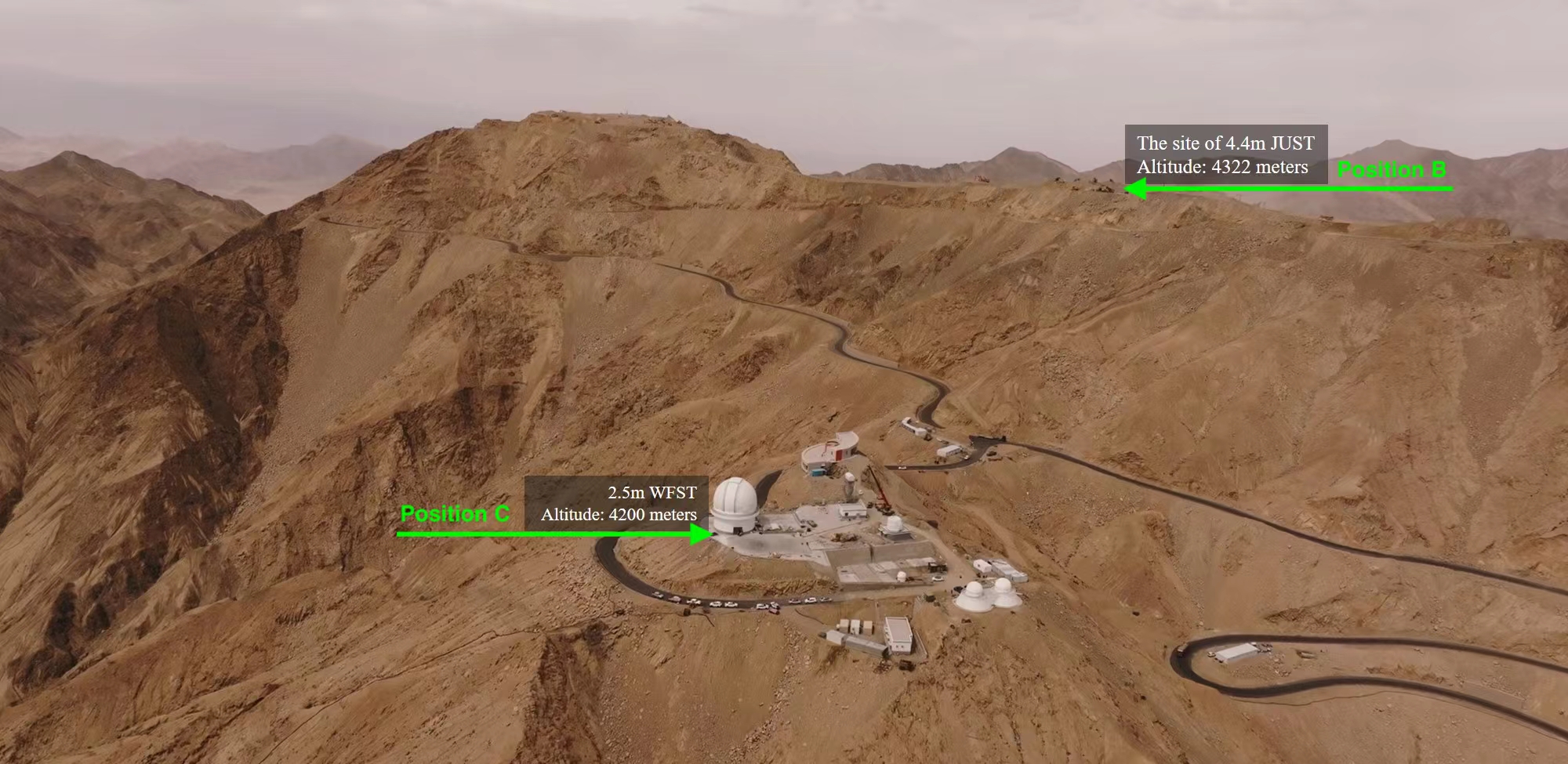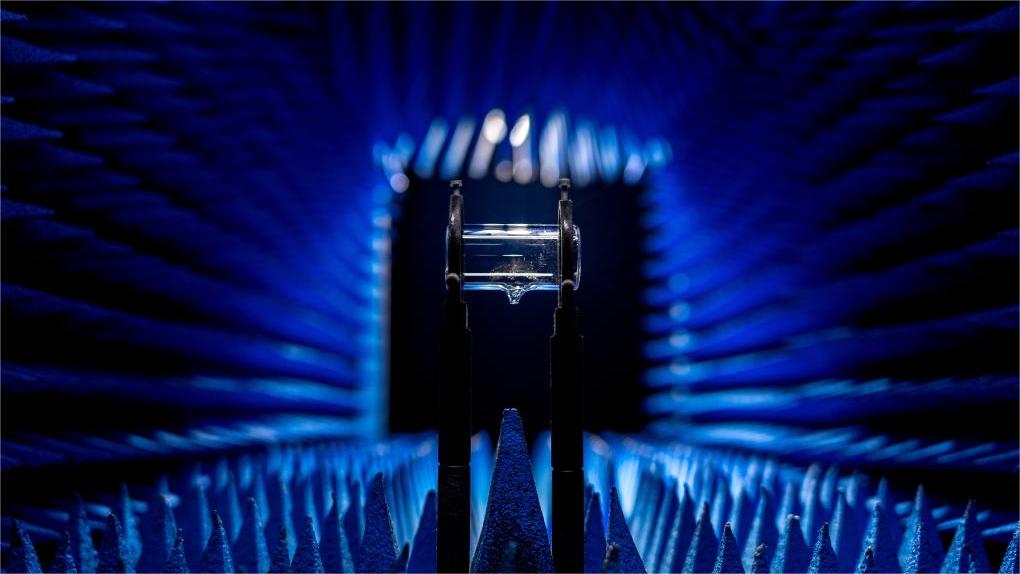China's most advanced spectroscopic telescope expected to start operations in 2026
China's Shanghai Jiao Tong University plans to construct the Jiao Tong University Spectroscopic Telescope (JUST), a 4.4-meter large aperture multi-functional spectroscopic telescope, at the Lenghu astronomical observation base in northwest China's Qinghai Province. After it is completed, the telescope is expected to achieve significant breakthroughs in time-domain astronomy, exoplanet exploration, and cosmic network structure and evolution.
The JUST is a significant project of the Tsung-Dao Lee Institute at Shanghai Jiao Tong University. It will be located in Saishiteng Mountain, Lenghu town, Mangya city, Haixi Mongolian and Tibetan Autonomous Prefecture, Qinghai.

The JUST will be installed at Position B, situated at an elevation of 4,322 meters in Saishiteng Mountain, Lenghu town, Mangya city, Haixi Mongolian and Tibetan Autonomous Prefecture, Qinghai. (Photo/Chen Bin)
The JUST will feature a lightweight design and multiple spectrometers, enabling swift switching and the timely spectral observations of target sources. It will focus on three research areas: exploring the dark universe, tracking the dynamic universe, and searching for exoplanets.
The telescope is expected to be completed and put into operation in 2026. It will serve as China's most advanced spectroscopic telescope, working in close collaboration with the Wide Field Survey Telescope (WFST) and the Chinese Space Station Telescope (CSST), set to be launched this year. This collaboration will yield valuable observational data, contributing significantly to the progress of astronomy in China.

The conceptual design of the JUST. (Courtesy of Shanghai Jiao Tong University)
The high-precision spectrometer of the JUST will revolutionize exoplanet detection efficiency by enabling simultaneous multi-target and high-precision spectroscopic observations, a first on an international scale.
Photos
Related Stories
- China's AIMS telescope achieves breakthrough in measuring solar magnetic field
- Building neutrino telescope 3,500 meters under sea
- X-ray telescope launched to learn more about black holes
- China's FAST telescope detects scintillation arc in fast radio burst
- China builds first antenna for world's largest radio telescope array
Copyright © 2024 People's Daily Online. All Rights Reserved.









